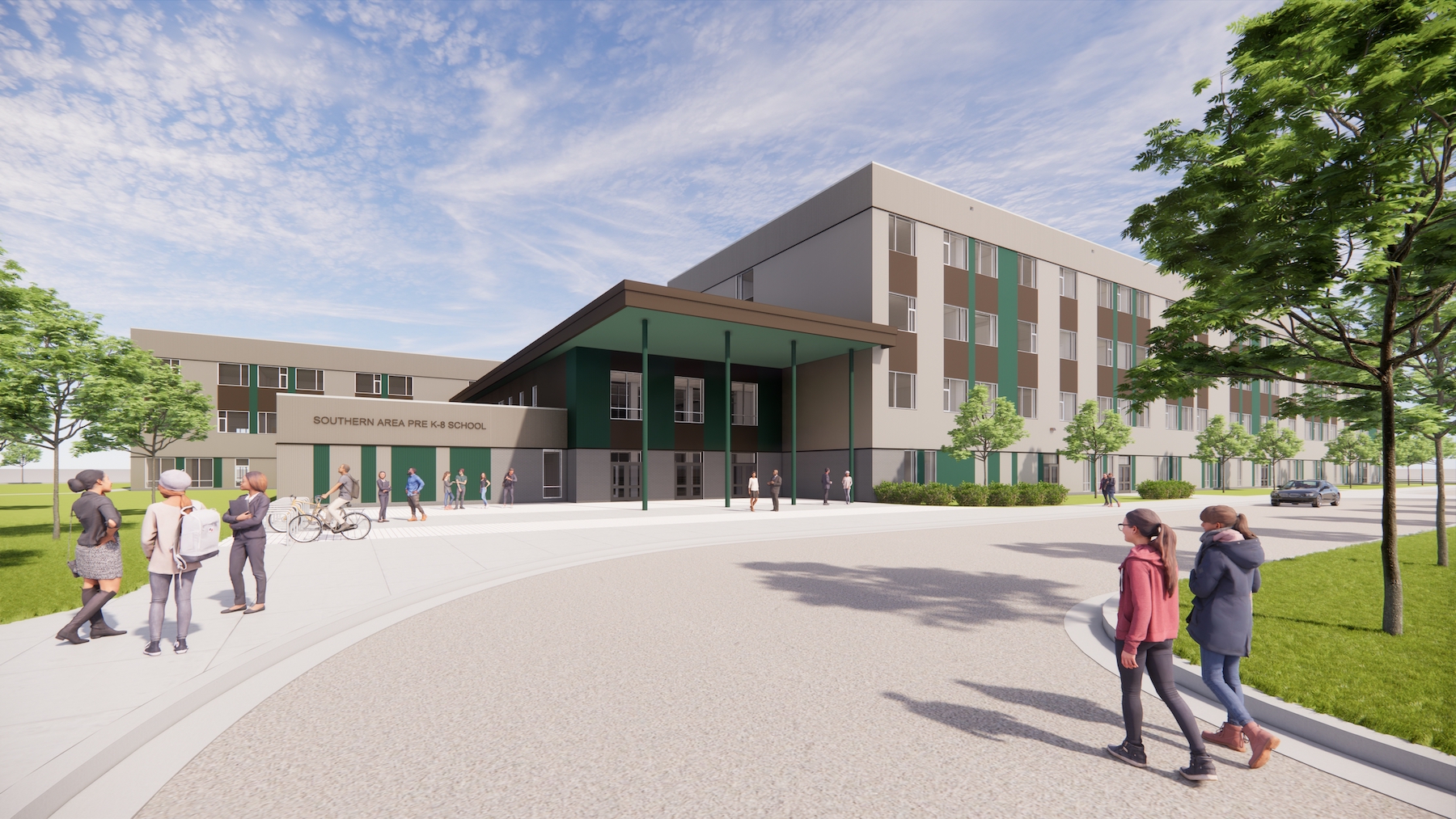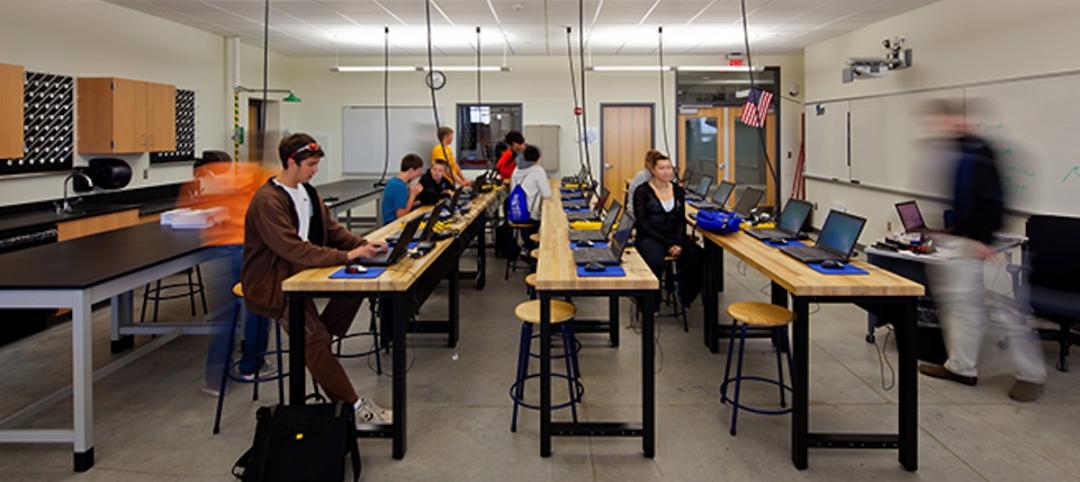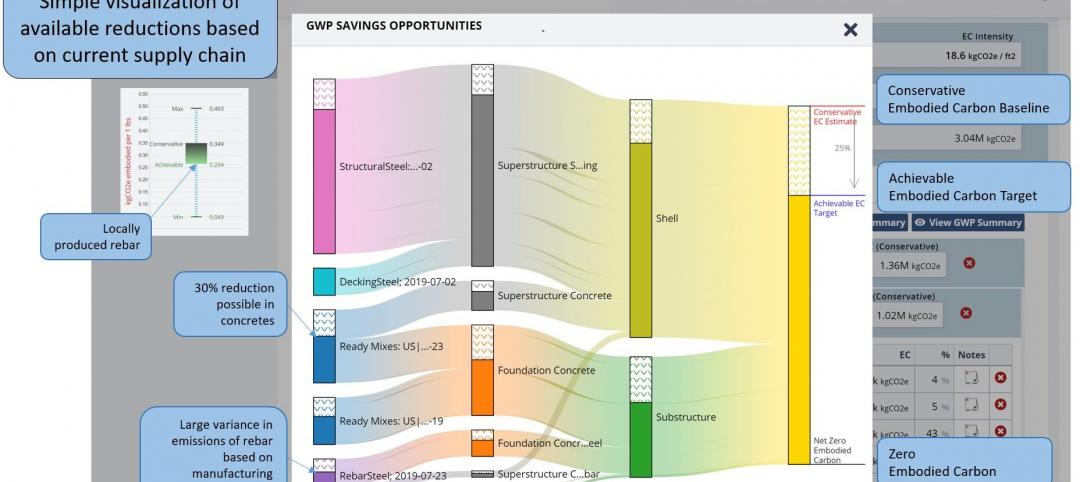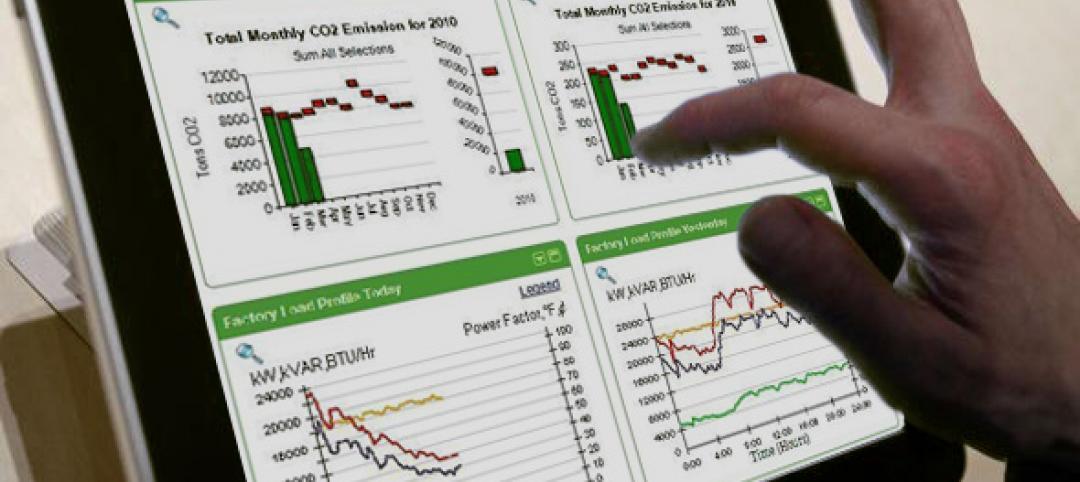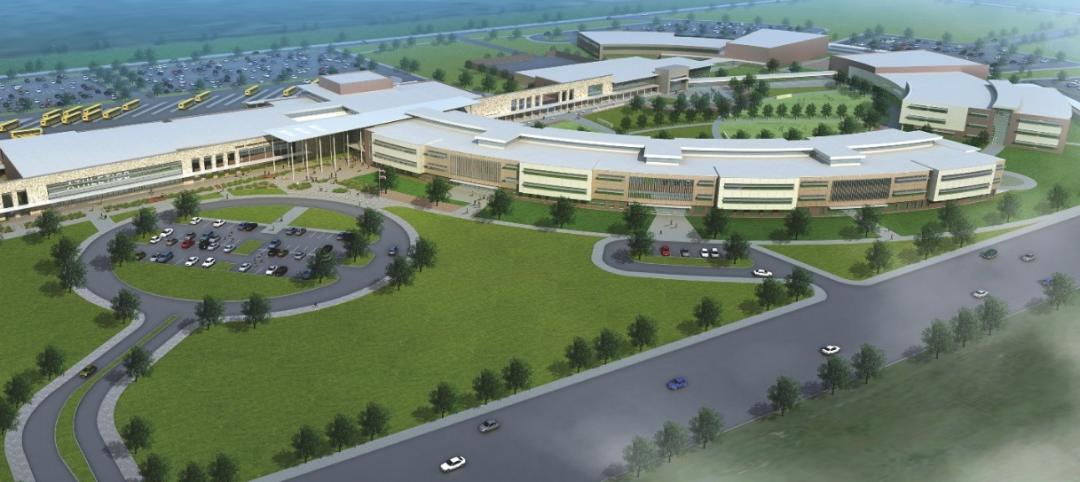Next month, Prince George’s County Public Schools (PGCPS) is scheduled to open the Colin L. Powell K-8 Academy in Fort Washington, Md., a 233,865-ft school with an occupancy of 2,000, whose construction budget is $106.2 million, according to the school district.
This is one of six schools that were built under PGCPS’s Blueprint Schools Program, a collaborative public-private partnership that has significantly reduced the schools’ construction time and cost.
The five other schools, which opened last August, are the 144,800-sf Drew-Freeman Middle School for classes 6-8 in Hillcrest Heights, Md.; the 162,610-sf Hyatt Middle School in Hyattsville, Md.; the 144,800-sf Kenmore School in Landover, Md., for 1,200 6th through 8th graders; the 144,800-sf Sonia Sotomayor Middle School in Adelphi, Md.; and the 144,800-sf Walker Mill Middle School in Capital Heights, Md., with a 1,200-person capacity.
In addition to STEAM labs with 3D printers and robotics, each Blueprint school will feature a video production studio, community clinics, and media center. The schools are solar- and electric vehicle charging-ready, with solar installation slated for completion in the fall of 2024. Hyattsville includes a black-box theater. And Colin Powell will have an elementary library, four Pre-K classrooms, and auxiliary gym, and innovation lab.
Commitment to diversity
The P3, known as Prince George’s County Education and Community Partners (PGCECP), delivered these schools in just 2½ years. Without this P3 agreement, it would have taken 16 years to fund and build them, according to Bob Hunt, Group Managing Director-Government, Education, and Non Profit Advisory for JLL, which served as the technical and financial advisor to PGCPS.
The P3 team includes development and financing members Fengate Asset Management and Gilbane Development Company, Gilbane Building Company (lead design-builder), Stantec (architect and design lead), and Honeywell (lead services provider).
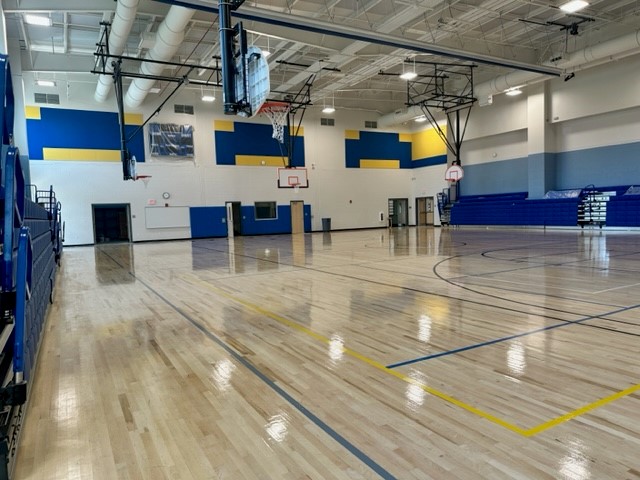
The Blueprint program’s planning, outreach, and support are geared toward increasing opportunities for small businesses, county-based businesses, and minority business enterprises. Scopes of work are created, and larger contracts are unbundled, to expand these businesses’ participation. This includes ongoing prequalification for all anticipated contracts for each key team member.
As of August 2023, PGCECP had exceeded its goal by awarding $134 million, or one-third, of its contracts for the schools built under Blueprint to Minority-owned businesses such as Arel Architects, which is part of the P3’s design team and has a mentor-protégé relationship with Stantec. Warren Builds Construction and Corenic Construction Group have similar arrangements with Gilbane. Three|E Consulting Group, a county-based business, serves as the economic inclusion and compliance team.
The next phase with more partners
Under a traditional design-bid-build contract, PGCPS estimates that the six schools would have cost an aggregate $868.8 million to design and construct. The schools in the Blueprint program were completed for a total of $485.8 million and include 30 years of facilities maintenance from Honeywell, which must adhere to MBE/CBB procurement requirements. PGCPS projects a savings of $170 million over three decades, compared to the traditional model.
Phase II of the Blueprint program will deliver eight more schools that further meet the needs of the district's 133,000 students and nearly 20,000 employees. Prince George’s County Education Collective was recently selected as Phase II’s final bidder. The Collective consists of equity members Plenary Americas US Holdings and Ellis Don Capital; MBE equity member Phoenix Infrastructure Group Investments, lead contractor MCN Build, and lead service providers US Facilities, Ellis Don Facilities Services, and RSC Electrical and Mechanical.
Related Stories
K-12 Schools | Mar 18, 2015
The new Vo-Tech: Transforming vocational workshops into 21st century learning labs
It’s no secret: the way students learn today is different. But facilities are adapting to the increasing demands of technology, collaborative learning, and project-based instruction.
Retail Centers | Mar 10, 2015
Retrofit projects give dying malls new purpose
Approximately one-third of the country’s 1,200 enclosed malls are dead or dying. The good news is that a sizable portion of that building stock is being repurposed.
K-12 Schools | Mar 2, 2015
BD+C special report: What it takes to build 21st-century schools
How the latest design, construction, and teaching concepts are being implemented in the next generation of America’s schools.
Codes and Standards | Mar 2, 2015
Nevada moves to suspend prevailing wage rules on school projects
The Nevada Senate approved a bill that would suspend prevailing wage rules on school projects.
K-12 Schools | Mar 1, 2015
Are energy management systems too complex for school facility staffs?
When school districts demand the latest and greatest, they need to think about how those choices will impact the district’s facilities employees.
K-12 Schools | Feb 26, 2015
Should your next school project include a safe room?
Many school districts continue to resist mandating the inclusion of safe rooms or storm shelters in new and existing buildings. But that may be changing.
K-12 Schools | Feb 26, 2015
Construction funding still scarce for many school districts
Many districts are struggling to have new construction and renovation keep pace with student population growth.
K-12 Schools | Feb 26, 2015
D.C.'s Dunbar High School is world's highest-scoring LEED school, earns 91% of base credits
The 280,000-sf school achieved 91 points, out of 100 base points possible for LEED, making it the highest-scoring school in the world certified under USGBC’s LEED for Schools-New Construction system.
K-12 Schools | Feb 25, 2015
Polish architect designs modular ‘kids city’ kindergarten using shipping container frames
Forget the retrofit of a shipping container into a building for one moment. Designboom showcases the plans of Polish architect Adam Wiercinski to use just the recycled frames of containers to construct a “kids city.”
University Buildings | Feb 23, 2015
Future-proofing educational institutions: 5 trends to consider
In response to rapidly changing conditions in K-12 and higher education, institutions and school districts should consider these five trends to ensure a productive, educated future.


